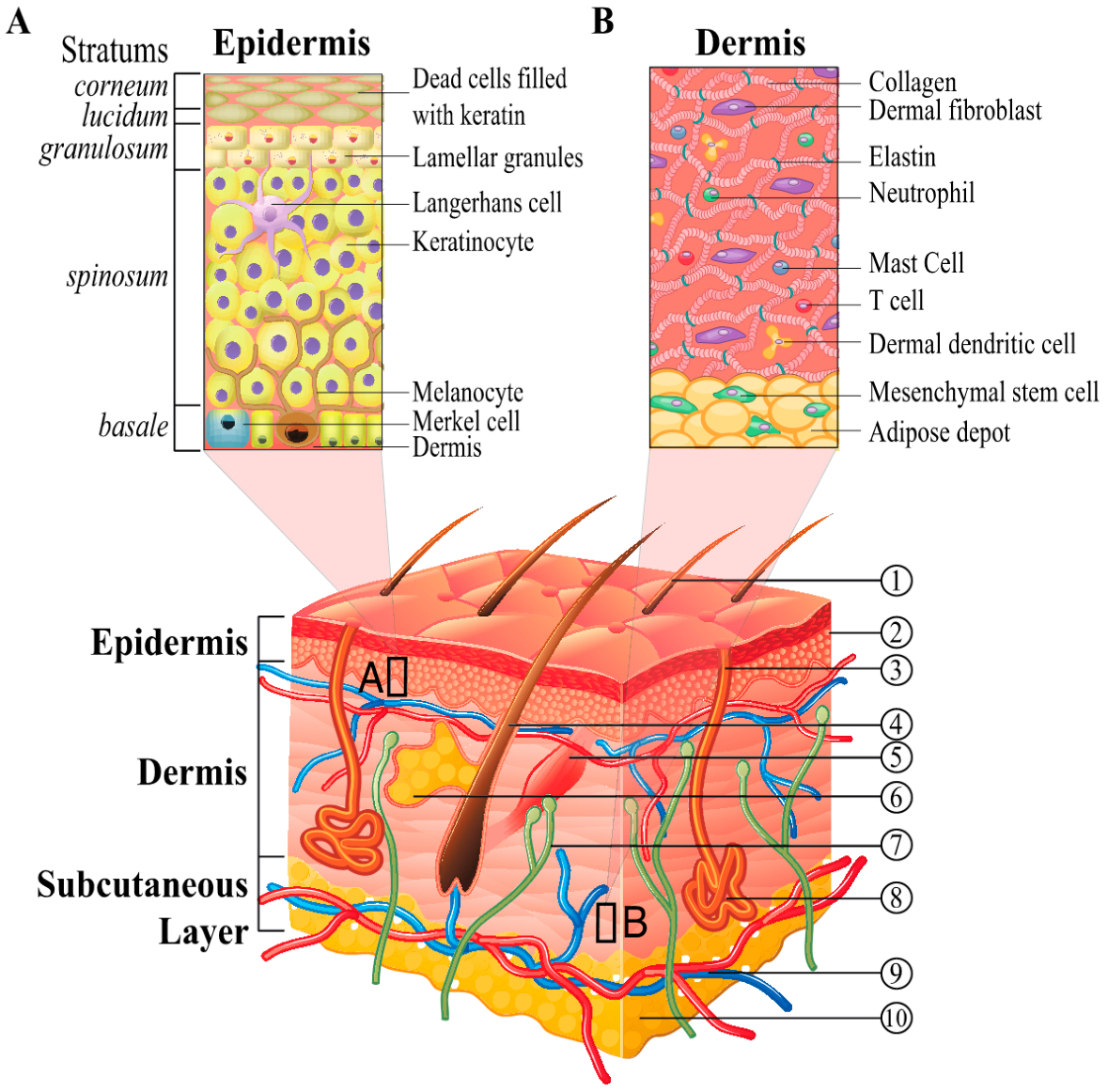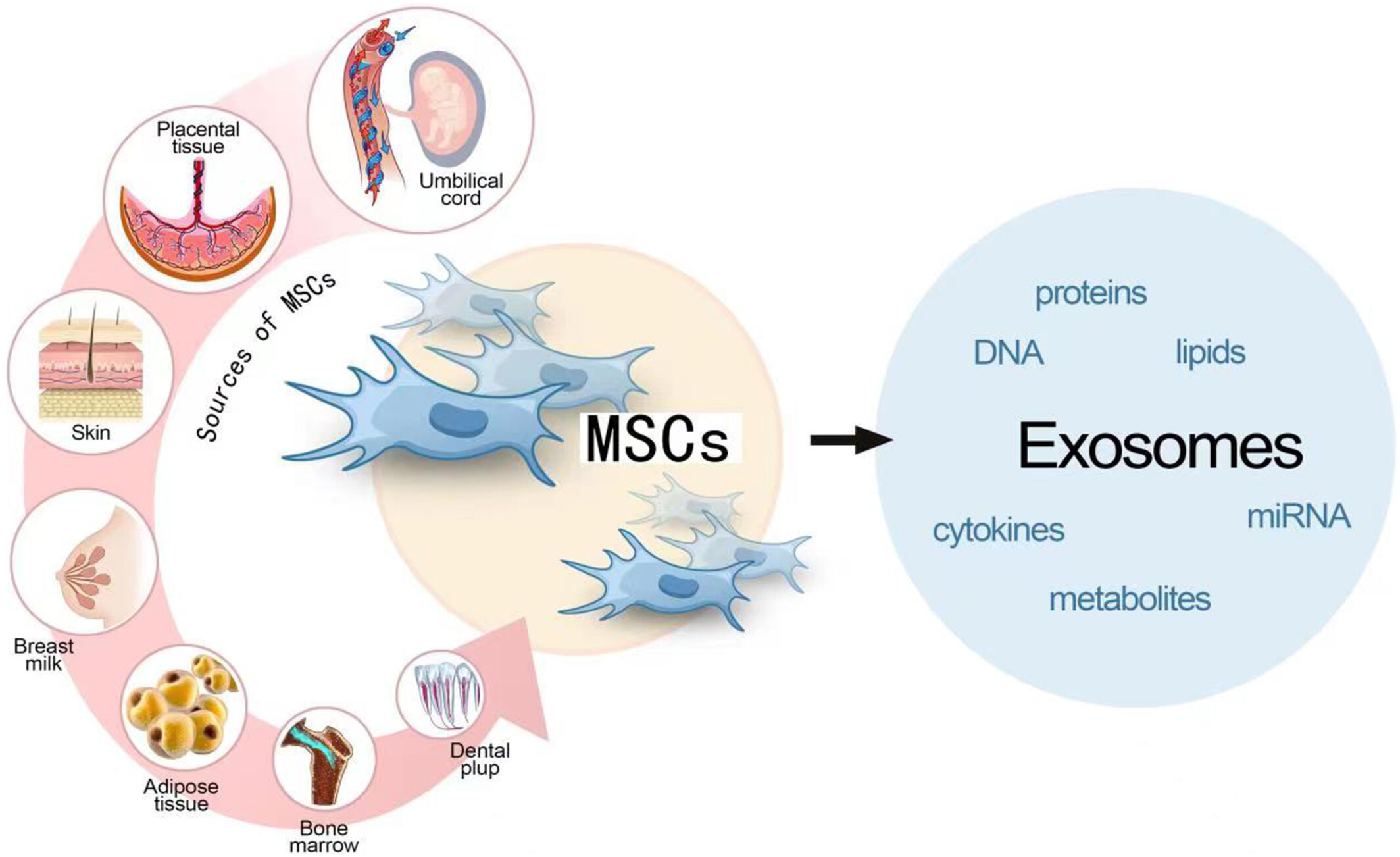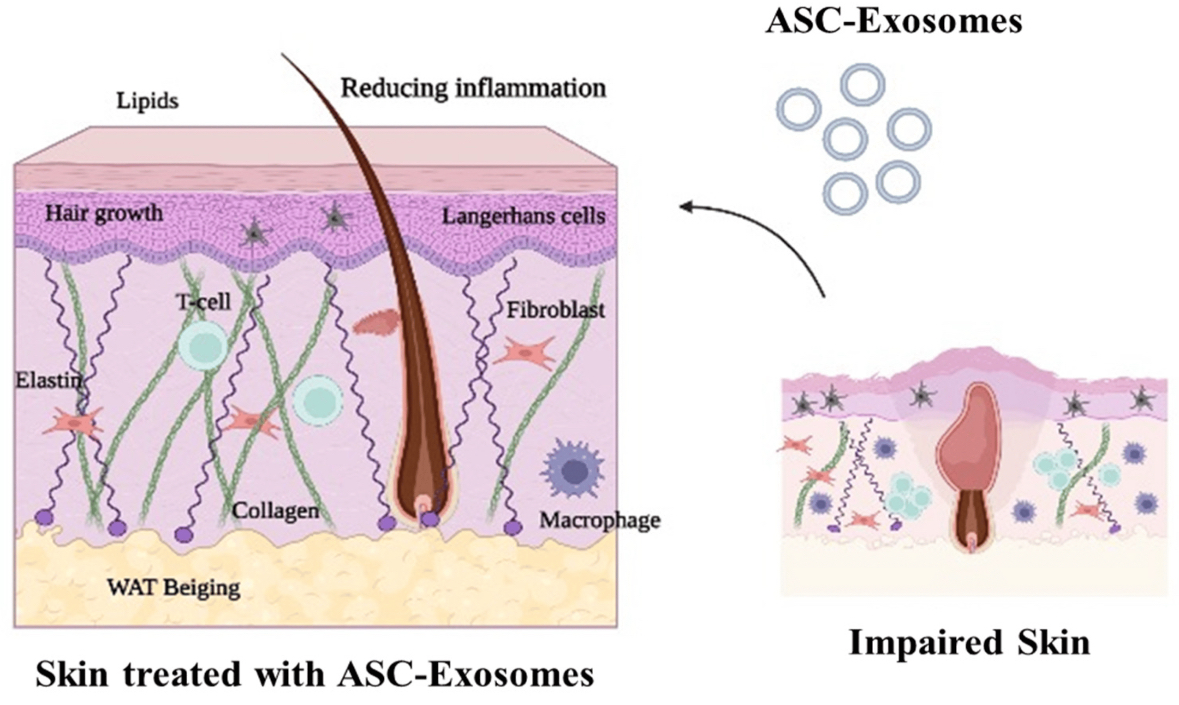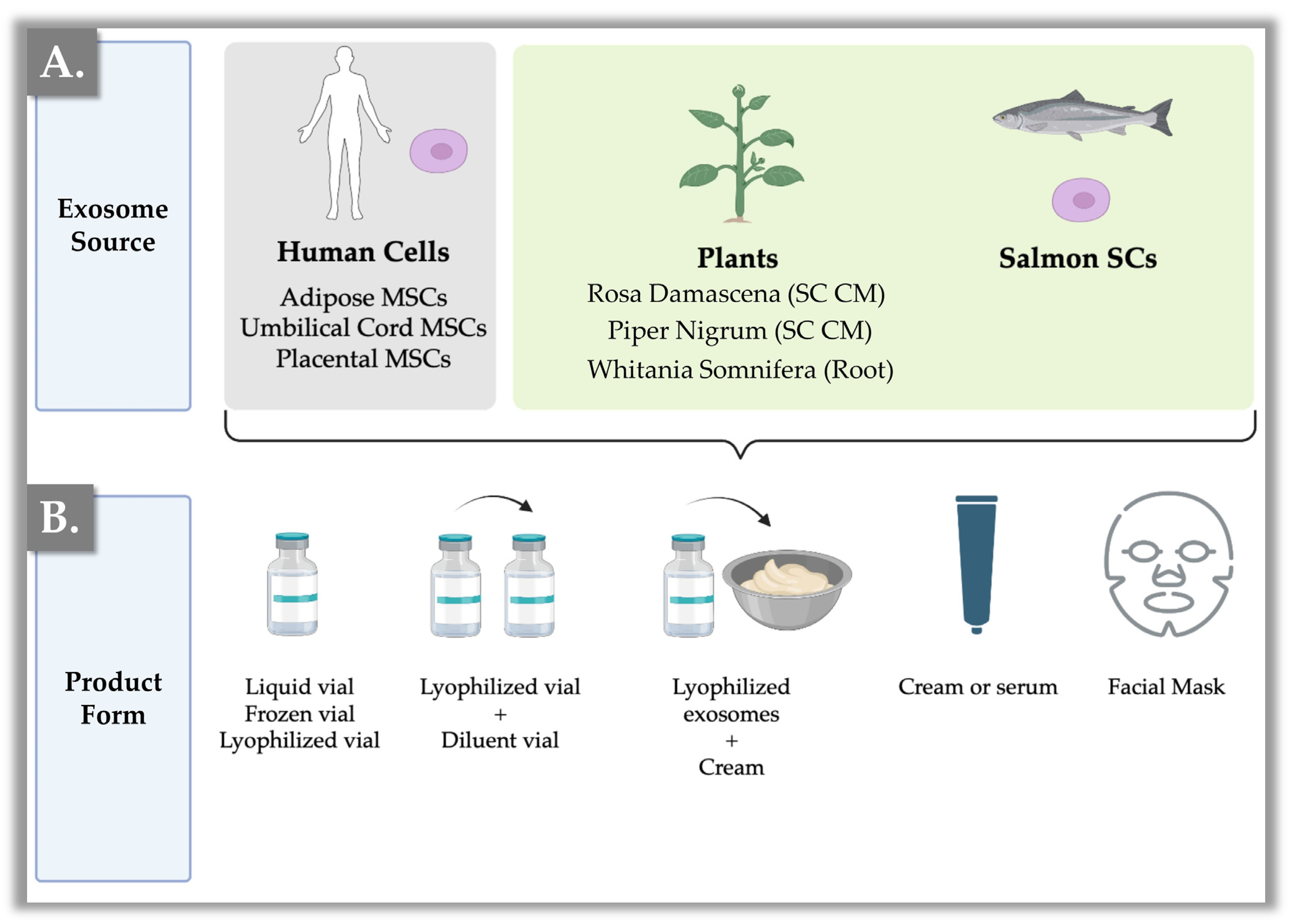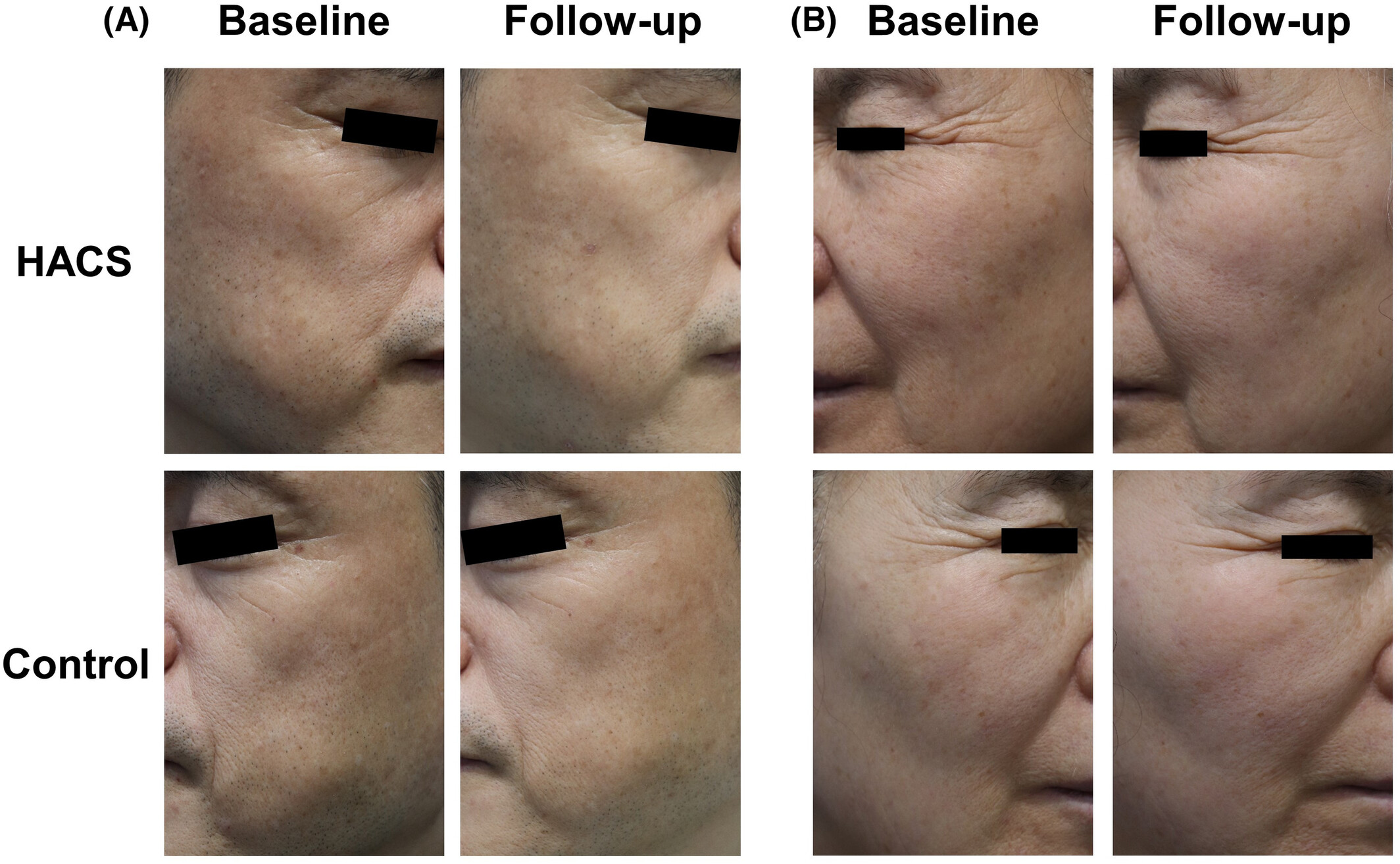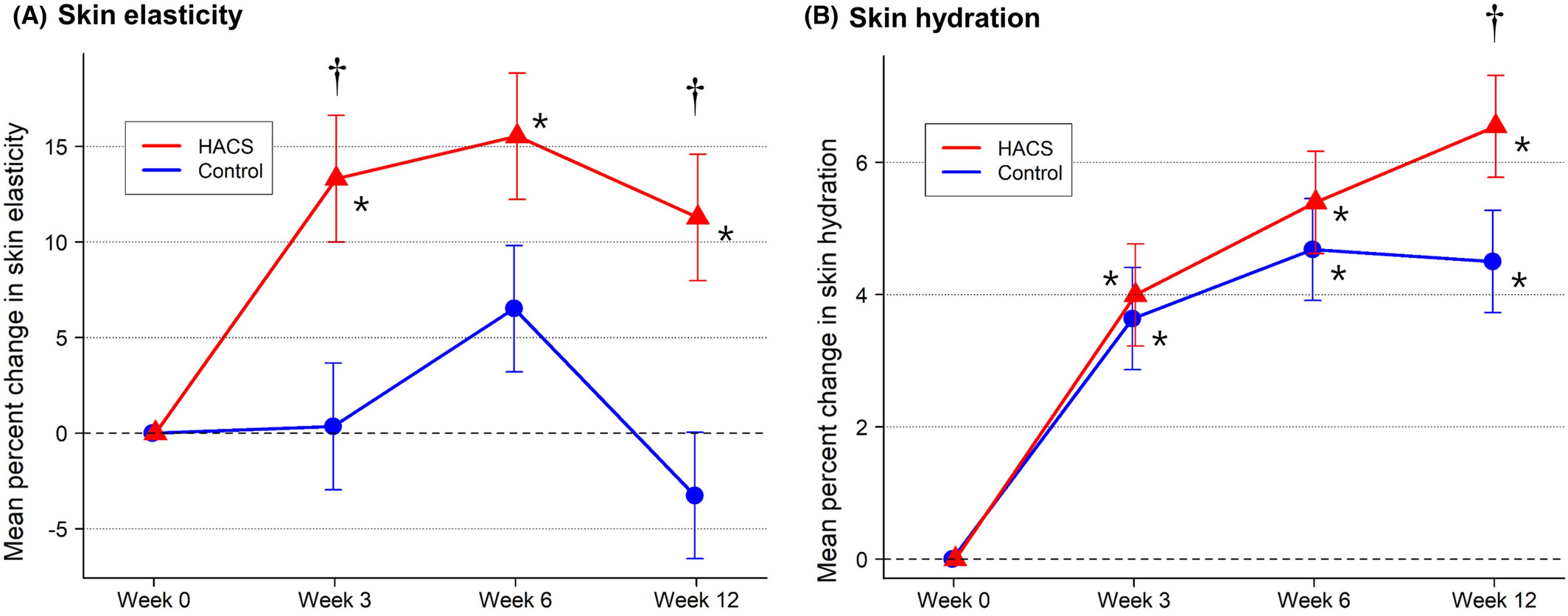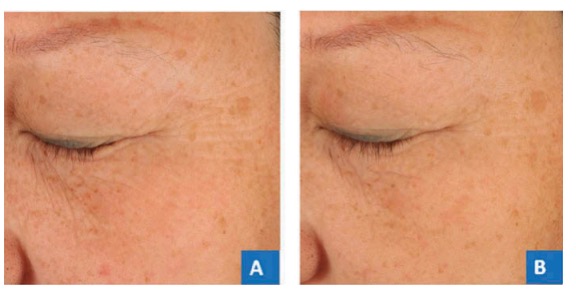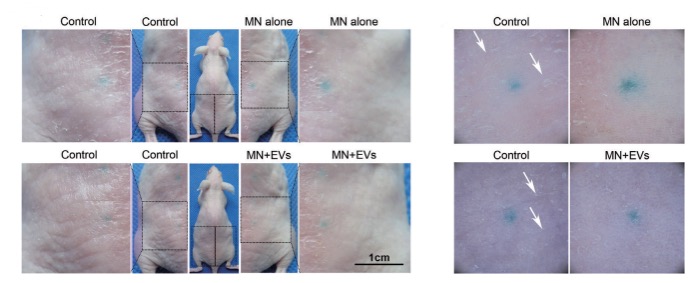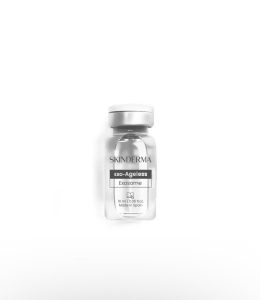The effect of mesenchymal stem cells and their exosomes on skin regeneration and rejuvenation
Abstract
Healing skin wounds as well as slowing down the skin aging process are challenges that have
always been studied by specialists and have a strong effect -on people’s quality of life. Many
studies have been conducted on Mesenchymal stem cells ) MSCs( and vesicles derived from them
and their effect on wound healing and delaying skin aging. The use of exosomes derived from stem
cells is known as a cell-free treatment that can be safer and more effective than cellular treatments
for skin challenges. This method helps to improve skin tissue by regenerating blood vessels and
nerves as well as stimulating fibroblasts and growth factors and reducing oxidative stress and
reactive oxygen species (ROS) . Considering the cost of extracting and producing human
exosomes, which are obtained from mesenchymal cells of various tissues such as umbilical cord,
bone marrow, adipose, skin, etc., as well as its high clinical applications, the approach of replacing
plant stem cells instead of human ones in cosmetics and health products is a method that has lower
costs and is widely studied today.
Keywords: Mesenchymal stem cells, Exosome, Wound Healing, skin regeneration and
rejuvenation , skinderma
Introduction
The skin is the largest organ of the body, which plays an important protective role; in addition,
it is also effective in maintaining physiological homeostasis and regulating body temperature and
immunity. This organ may face various problems over time, including injury or aging, so far,
various methods have been provided to improve the quality of the skin in against these problems.
Skin aging is a complication that can be caused or aggravated by various internal and external
factors. One of the most effective factors affecting the skin aging process is sunlight and UV rays .
The ability to regenerate and renew the skin is maintained by stem cells in the skin, and in this way
they can cause a balance in cell turnover during skin homeostasis and the repair process during
injury [1].With the development of dermatology and recent studies, it has been determined that
there can be a direct relationship between the regeneration and renewal of skin cells and stem cells.
Stem cells can be used to accelerate the wound healing process or slow down the aging process of
the skin. In fact, they can enhance skin regeneration after injuries and damage caused by the aging
process or external factors such as UV radiation [2]. Meanwhile, exosomes derived from
Mesenchymal Stem Cells (MSCs) also have a great effect on skin health. Exosomes are nano-sized
vesicles that are active in intercellular communication and can easily transfer bioactive substances,
lipids, proteins and other contents to the recipient cell. Since exosomes derived from stem cells
contain a high concentration of growth factors, they can have anti-aging effects in fibroblast cells
and stimulate collagen synthesis [3].In this study, we will investigate the mechanism of the effect
of mesenchymal stem cells and exosomes derived from them on the process of skin cell renewal
and regeneration and the clinical methods of their use, as well as the limitations and of course the
substitution of plant and animal stem cells for human.
Skin Structure
Human skin, the largest organ, and the first defense barrier consists of different layers. Each
layer has a unique function and structure that work in conjunction with each other to protect the internal organs of the body. [4]
The outermost layer is the epidermis, which itself consists of various sublayers, the innermost stratum is the basal layer, which is the place where melanocytes and keratinocytes are produced. Melanocyte cells transfer their produced melanin to keratinocytes through their dendrites, and these are keratinocyte cells that have differentiated into different stratums. Finally, they turn into corneocytes, fall off, and are replaced by new cells. The next stratum is spinosum, in which Langerhans immune cells are located, which are responsible for protecting the body against foreign agents [2] . The formation of natural moisturizing factors (NMFs) occurs in the stratum granulose.
The fourth stratum is the lucidum, which can be seen in some parts of the body, such as the palms
and feet, and the outermost stratum is the stratum corneum. The main cells of this stratum are
corneocytes, which are biologically considered dead but biochemically have NMF and play an
important role in skin health. In fact, this layer protects the skin from environmental damage and
stress and also limits the penetration of chemicals into the skin [5].
Between the epidermis and dermis layers, there is a membrane known as the dermal-epidermal
junction, which includes keratinocytes, fibroblasts, type IV collagen, and proteoglycans, and its
function is to provide strong and supportive and scaffolding tissues which also helps to stick to the
lower stratums. In addition, it helps to repair and improve the tissue [6].
The dermis is the second layer of the skin, which has a thickness between 2 and 4 mm and
consists of two parts, papillary and reticular. The papillary part, which has a capillary network and
is responsible for providing oxygen and nutrition to the epidermis, and has fibroblast cells, which
are responsible for the production of collagen and elastin, as well as the extracellular matrix, which
is based on glycosaminoglycan, and causes strength and the elasticity of the skin. The reticular
dermis is thicker than the papillary dermis, and its underlying substance is glycosaminoglycan,
80% of which is hyaluronic acid, which moisturizes the skin. Sebaceous glands, hair follicles, and
sweat glands are also located in this layer.
Fig 1.Skin structure: The skin consists of 3 main layers: epidermis, dermis, and hypodermis. (1) Hair shaft, (2) Stratum
corneum, (3) Sweat pores, (4) Hair follicle, (5) Arrector pili muscle, (6) Sebaceous gland, (7) Nerve, (8) Eccrine sweat glands, (9) Skin vascular network, (10) Adipose tissue Fig. (A) shows the detailed structure of the epidermis with its stratums, and Fig. (B) shows the composition of cells and dermis[2]
The innermost layer of the skin is the hypoderm, also known as the subcutaneous layer. It is
mainly composed of a large number of adipocytes and, of course, blood vessels [4] and acts like a
shock absorber. Its main functions are to protect the internal organs, generate heat and energy, and make the skin slide more easily on the organs.
Mesenchymal stem cells (MSCs)
Mesenchymal stem cells were first observed in bone marrow by Kuhnheim (1867), who
discovered that these cells could be the source of fibroblasts involved in wound healing. The term
MSCs was presented by Kaplan (1991) after his studies with human bone marrow research. Since
then, because of their easy isolation, expansion, and multipotentiality, MSCs have rapidly become
popular as a promising therapeutic agent for regenerative medicine [7]. MSCs can be obtained
from different tissues, which will have different biological function from different tissues, which will have different biological functions, such as tissue repair, anti-inflammatory properties, immune system suppression, and neuroprotection. These cells can be easily obtained from tissues such as adipose, bone marrow, umbilical cord, amniotic fluid, and placenta. Past studies have shown that these cells can play an effective role in the regeneration and renewal of skin cells, and this process is carried out by modulating inflammatory responses,
facilitating tissue formation, promoting cell proliferation and migration, and, of course, inhibiting cell death. In addition, MSCs have a potential capacity to produce exosomes, which offer higher immunity in treatment than stem cells [8].
Mesenchymal stem cell-derived exosomes
Exosomes are nano-sized vesicles that are between 30 and 200 nm in diameter and contain a large amount of proteins, lipids, and genetic materials such as mRNA and miRNA. Exosomes are released by cells and can circulate in the bloodstream [9]. They can easily transfer their contents
into the recipient cell through endocytosis, that’s why they are a promising method for drug or
gene delivery [3]. In fact, exosomes act as messengers and carry biological molecules. Receptors
selectively absorb these molecules to affect various cellular processes such as gene expression,
cell-to-cell signaling, immune responses, and tissue repair [10]. Treatment using exosomes is
known as a cell-free method, which is associated with lower risks such as tumorigenesis, reducing
the potential of uncontrolled cell differentiation and cell proliferation, and, of course, regulation
of gene expression compared to stem cell treatment methods [9, 3]. Considering the potential of
exosomes, using this method can have a significant effect on skin health. The exosomes are used
to prevent aging and reduce skin wrinkles, improve skin tissue and hydration, and, of course,
increase strength and elasticity and reduce inflammation and damage caused by sunlight. Also,
exosomes have been used to repair skin tissue and treat skin diseases such as lupus, psoriasis,
atopic dermatitis, vitiligo, and hair growth and strengthening [9]. Fig. 2 shows some sources of
MSCs and exosome-forming factors
Fig 2.Tissue sources of MSCs, which are the placental, skin, bone marrow, adipose tissue, etc., and
exosomes derived from them and the constituents of exosomes [8]
Application of Mesenchymal stem cells in skin regeneration
1. Wound healing
Types of wounds can be divided into two categories, acute and chronic, based on the time and
process of healing. For wound healing, different cellular mechanisms such as cytokines, tumor
necrosis factor, and growth factors such as fibroblast growth and endothelial cells need to be
involved [10]. In general, wound healing has 3 phases: Phase 1 (inflammation): It starts with the
migration of inflammatory and stem cells to the wound site; Phase 2 (Proliferation): secretion of
growth factors and migration of endothelial cells, keratinocytes and fibroblasts to start the
production and repair of the extracellular matrix; Phase 3 (Epithelialization): It is the final phase
of wound healing process, which causes the synthesis and organization of collagen and elastin
proteins and ultimately improves the skin tissue [2]. In fact, these cells migrate to the wound site,
reduce inflammation, and increase the proliferation and differentiation of fibroblasts, epidermal and endothelial cells.
The inflammatory phase of the wound healing process is necessary because it attracts immune
cells to reduce pathogens. However, chronic inflammation itself can delay the healing process.
MSCs can inhibit this inflammatory response in different ways. Studies show that MSCs have the
ability to inhibit inflammation through the modulation of macrophage polarization or the expression of anti-inflammatory cytokines.
In the proliferation phase, macrophages release epidermal growth factors to stimulate and proliferate keratinocytes and fibroblasts to synthesize collagen and elastin.
Along with wound healing and skin tissue repair, nerve functional recovery is also very important, as MSCs have the ability to promote neuron regeneration and can strengthen nerve
regeneration.
Zhang et al. (2018) showed that Human Adipose-derived Stem Cells (HASCs)-derived exosomes
can cause the proliferation and migration of fibroblasts, optimize collagen deposition, and improve
the wound healing process [11]. Exosomes have the ability to inhibit pro-inflammatory cytokines
to enhance anti-inflammatory effects and extracellular matrix regeneration [12]. As mentioned,
exosomes enhance intercellular communication and modulate the gene activities of cells around
the wound through the miRNAs they contain. This causes angiogenesis and increased blood
circulation around the wound, and ultimately more nutrients and oxygen will reach the site, which accelerates the healing process of the wound [9].
On the other hand, studies have shown that HASCs and their exosomes, by reducing inflammation and the synthesis of extracellular matrix and growth factors, play a major role in improving skin abnormalities that lead to wounds, such as acne and alopecia [9].
Fig 1. The effect of HASCs-derived exosomes in the regeneration and improvement of skin tissue [9]
2. Burn injury
Depending on its severity, the burn is divided between grades 1 and 3. The rate of recovery
depends on the severity of the burn, and a superficial burn needs at least 2 weeks to repair and
regenerate [7]. Many studies have shown that MSCs can be effective in healing these types of
wounds by closing the wound, increasing angiogenesis, and minimizing the wound area [13].
Application of Mesenchymal stem cells in skin rejuvenation
From about 25 years old, the first signs of skin aging appear. Aging is a natural process for the
skin, which is caused by internal and external factors, and its common symptoms are wrinkles,
loss of volume, loss of density, and elasticity of the skin. Although aging is caused by structural
changes in proteins, glycosaminoglycans, water, and lipids [2] but, skin aging occurs in all three
layers of skin, including the epidermis, dermis, and hypodermis. With increasing age, the amount
of free radicals in the body also increases, and on the other hand, the activity of Matrix
Metalloproteases (MMPs), which destroy collagen and elastin, also increases. In addition to these
cases, the Ultraviolet (UV) rays of the sun also cause aging of the skin [14]. Since the number of
mast cells and fibroblasts decreases with age, the production of collagen, elastin, and hyaluronic
acid also decreases. In addition, the level of glycoproteins, which are the main components of the
extracellular matrix, is also decreasing. Therefore, on average, during every decade of human life,
the thickness of the epidermis layer decreases by 6.4% [2].
As mentioned, UV rays play an essential role in skin aging. This ray has three spectrums: UVC
is absorbed by ozone and does not reach the skin, but UVB and UVA strongly affect the skin.
UVB mainly targets the epidermis and, to some extent, can increase MMPs, but UVA has more
penetration and directly affects the activity of fibroblasts. In addition, it can cause macromolecular
damage and, of course, the removal of mitochondrial DNA [8] .
1. Antiaging using Human Adipose Mesenchymal stem cells
HASCs have received much attention due to their ability to secrete several growth factors
necessary for skin regeneration [2]. These cells increase elastic fibers in the surface stratum of the
dermis and strengthen collagen networks and mesh fibers. Also, these cells can be effective in
regenerating the components of the skin’s elastic matrix, including elastin [7].
Another use of these cells in preventing the aging process is the free-cell method. In this method,
extracellular vesicles of HASCs are used, which have photoaging potential, which increases the proliferation of epidermal cells and also reduces wrinkles. It can also effectively prevent cellular DNA damage by reducing the production of Reactive Oxygen Species (ROS) and, of course,reducing the activity of MMPs, as a result of which collagen destruction occurs less. Also, the results of in vitro tests have shown that the activity of fibroblasts also increases [3]. In fact, HASCs-derived exosomes as well as Bone Marrow-Mesenchymal Stem Cells (BM-MSCs)-
derived exosomes can decrease Tumor Necrosis Factor Alpha (TNFα) activity and decrease ROS production, as well as increase Tumor Growth Factor Beta (TGFβ) and procollagen I production which ultimately increases collagen synthesis in the skin [9].
Fig 2. The role of exosomes in improving skin wrinkles, HASCs-derived and BM-MSCs-derived exosomes can reduce ROS production, decrease TNFα and increase TGFβ, and finally increase collagen synthesis and increase skin elasticity [9].
2. Antiaging using bone marrow Mesenchymal stem cells
D-Galactose is a monosaccharide sugar that causes dysfunction of cell mitochondria and
oxidative stress. The use of BM-MSCs can significantly reduce the oxidative stress caused by
aging in the skin. Since these cells have the ability to strengthen antioxidant responses and reduce
oxidative stress, they can be effective in improving skin tissue abnormalities caused by D-Galactose. They may also have a positive function in skin rejuvenation [15]. Their exosomes contain bioactive molecules such as growth factors, cytokines, and miRNA, which have an effect on skin regeneration and repair. Also, the exosomes of these cells have the ability to reduce the activity of MMP-1 and MMP-3 and increase the production of type I collagen.
3. Antiaging using Umbilical Cord (UC)- Mesenchymal stem cells
UC-MSCs are stem cells that are taken from different parts of the umbilical cord. The ability of
these cells to self-renew and differentiate into all types of body cells, such as osteoblasts,
adipocytes, etc., can be mentioned. Among other properties of these cells, they are immune
modulating, anti-inflammatory and anti-oxidative properties. In recent studies, researchers have
specifically focused on the role of exosome proteins in these cells and showed that they can
effectively protect skin cells against damage caused by sunlight and UV rays. This protection is
done by increasing the expression of type I collagen and reducing the activity of MMPs in skin
cells that are damaged by sunlight [3].
The role of exosomes in the regulation of skin pigmentation
Recent studies show that exosomes are able to stimulate melanin synthesis and increase skin
pigmentation [16]. In fact, exosomes affect the activity of tyrosinase enzyme, which are important
factors in the process of melanin production. Research shows that exosomes derived from
keratinocytes are able to activate melanocyte precursors and cause their differentiation into mature
melanocytes. On the other hand, exosomes can help the migration of melanocytes from one area
of the skin to another area that needs pigment. In fact, these vesicles can help the expression and
activity of genes related to skin pigmentation, and since they affect intercellular communication,
they can provide a way to transfer the tyrosinase enzyme and increase the activity of melanins.
Therefore, this ability of exosomes can be used in the development of treatment for skin disorders
such as vitiligo [9] .
Exosomes in the skin care industry
In recent years, the use of stem cells and exosomes has received a lot of attention, which can be
delivered to the skin by various invasive and non-invasive methods [3]. It is noteworthy that no
injectable exosome-containing product has yet been approved by the FDA. This is because the methods and technologies for producing these products are very wide and varied, and even environmental and storage conditions can produce different results in treatment. For this reason,these products are currently classified as cosmetic products by the FDA and EMA, and their use
is only permitted in the epidermal layer of the skin [17]. These products are primarily extracted
from human mesenchymal stem cells, but they can also be produced from plant stem cells such as
rose, Piper nigrum, and Whitania somnifera root or animals [17]. Among living organisms, the
structure of the human body and fish are the most similar, which is why many products use stem cells and fish DNA, especially salmon, for this purpose.
They are used in non-invasive treatment and, in the cosmetic world in creams, serums, and masks
and have various effects, including therapeutic and anti-aging benefits. As mentioned earlier,
exosomes are rich in protein and lipids that can improve skin tissue and hydration. In addition,
these molecules can increase collagen synthesis and reduce skin inflammation, as well as protect
the skin against all types of stress. Studies show that exosomes can increase the performance of compounds such as hyaluronic acid, peptides, and antioxidants [18].
Figure 5-Commercial prospects of exosome-containing products – A. These products are initially derived from
human mesenchymal stem cells. However, they can also be extracted from stem cells of some plants and animals.
B. They are available in various forms in 3-5 ml vials as liquid, frozen or lyophilized, which in the lyophilized state
must be mixed with a diluent. They are also available in the forms of creams, serums, and eye masks and patches
[17]
HASCs-derived exosomes are easier to access than other exosomes, and therefore, studies have
been conducted with the aim of examining the effectiveness of using solutions containing these
exosomes and combining them with microneedling on skin aging. In this study, microneedling
with solutions containing HASC-derived exosomes on one side of the face and microneedling with
normal saline solution on the other side as a control was used, and after a period of 12 weeks,
significant results of the effects of exosomes on skin aging were seen. In fact, the improvement of wrinkles can be seen on both sides of the face according to the mechanism of microneedling but the therapeutic effect of exosomes has been significantly higher than the control side. In addition, the elasticity of the skin did not change significantly on the control side, but it increased significantly on the tested side. Another factor that has been examined is the level of skin hydration, which has increased on both sides, but the use of a solution containing exosomes has
had more significant effects [19]
Fig 6. Baseline and follow-up photographs of HACS and control sides in (A) a man (52 years old (GAIS scores, 5
and 3, respectively) and (B) a woman (60 years old) GAIS scores, 5 and 4): HACS solution containing exosome-
derived Stem cells of human adipose tissue (GAIS: global aesthetic improvement scale). [19]
Fig 7. Skin elasticity and hydration results after each visit. HASC: solutions containing HASC-derived exosomes [19]
Similar to the above study, the regenerative and rejuvenating effects of a protein extract obtained from adipose tissue-derived mesenchymal stem cells combined with the microneedling technique were specifically investigated on the skin of Asian individuals with color skin types 3 and 4 and the age range of 40 to 63 years. This study showed that this protein extract combined with microneedling could potentially be used as an anti-aging and skin lightening agent [20].
Figure 8- Effect of protein extract obtained from adipose tissue-derived mesenchymal stem cells
combined with microneedling technique on improving crow’s feet wrinkles around the eyes in
Asian skin [20]
According to the results of clinical studies, the combination of microneedlling or laser therapy
with exosome therapy is much more effective than microneedling and laser therapy alone [17]. In a laboratory study on mouse skin, it has been shown that the combination of microneedling
(dermaroller type) with exosome has a very significant effect on improving skin quality and reducing wrinkles and damage caused by UV radiation. The use of microneedling alone has also been effective, but the effectiveness of the combined method is much greater [21]. Figure 9 also shows the complete improvement in skin texture macroscopically and dermoscopically.
Figure 9 – Investigating the effect of microneedling alone and using exosomes on the healing process of skin tissue damaged by UV radiation. (a) Macroscopic examination. (b) Dermoscopic examination. The results show the high effect of combined treatment of exosome and microneedling on skin regeneration and healing [21]
Among specialized skin care products, the use of MSCs and exosomes is expanding, and
currently, there are brands in the market that use this process in their products. In the product
portfolio of the German Janssen Brand, there is a stem cell vial, which features of these ampoules
are stimulating collagen synthesis, skin regeneration, increasing skin flexibility and elasticity, and, of course, reducing skin wrinkles and rejuvenation.
As explained earlier, salmon stem cells are used in some specialized rejuvenating products.
Salmon stem cell cocktails are used in Mesoxy Brand, which is placed in the basal membrane between the dermis and epidermis, stimulates the mitosis of skin cells, and has a good performance in healing scars. In fact, in cases where the skin is damaged, it has a good healing effect and can be combined with the involved lines as a treatment supplement. In addition, it is also very suitable for skin whose moisture has decreased due to aging. As mentioned, creams, serums, and masks can be used. In the Korean Eclado Brand, there is a stem cell cream that is used for rejuvenating, brightening, and moisturizing.
Although the use of human stem cells and exosomes is considered a promising approach to
treating many skin diseases and improving skin quality, the cost of their production and use in clinical applications is very high. Therefore, the use of plant stem cells and exosome-like nanovesicles obtained from plant cells is expanding in cosmetic products. The advantage of this (a) (b)
Figure 9 – Investigating the effect of microneedling alone and using exosomes on the healing process of skin tissue damaged by UV radiation. (a) Macroscopic examination. (b) Dermoscopic examination. The results show the high effect of combined treatment of exosome and microneedling on skin regeneration and healing [21]
method is low toxicity, high biocompatibility, compatible with the environment, low cost and high
production ability [22].
Plant stem cells show antiaging properties and can stimulate fibroblasts and collagen synthesis.
The antioxidant properties of these cells protect proteins and nucleic acids from oxidation
processes and oxidative stress. Switzerland Mibelle AG Biochemistry Co., one of the pioneers in
the use of stem cells for the cosmetics industry, used apple stem cells in 2008. The use of plant
stem cells such as ginger leaves by the French Naolys Co. and Iris also has antiaging properties
and can improve the skin structure and reduce the size of pores [23].
Among the different brands that use this new mechanism in their products, the use of the anti-
aging and therapeutic cocktail of the Skin Derma brand with meso needling has unique effects on
skin rejuvenation. The exosomes in this cocktail are taken from plant cells and lactobacillus, which
transfer the effective ingredients directly to the skin cells and will initiate skin regeneration
processes. Another effective ingredient of this cocktail is galactomyces extracellular vesicles,
which is a yeast that contains vitamins, amino acids, minerals and organic substances, all of which
promote skin health and actually act as antioxidants, and of course, cause deep hydration and
improve skin texture , transparency and shine and protection of the skin. Polypeptide complex
obtained from Nicotiana benthamiana plant, which is present in this cocktail, by mimicking the
TGF-β2 growth factor, can improve skin elasticity and reduce signs of aging, and of course
preserve melanocyte stem cells.
Fig 10. Active ingredients in the anti-aging cocktail of Skinderma brand
Concerns in the production of exosome-containing products
As mentioned earlier, injectable products containing exosome are not yet approved
by the US Food and Drug Administration or the European Medicines Agency, and these products are classified as cosmetic products, because exosomes taken from
living organisms can carry the risk of viruses or pathogens from donor cells. On the other hand, exosomes have the ability to stimulate immune responses and can cause
inflammation, allergic reactions, or may be rejected by the recipient’s immune system. Therefore, these products are not recommended for people with high levels of inflammation or infection or immune system disorders. Another point to consider in these products is the use in people with active cancer, which is prohibited because
exosomes may contain micro RNAs or certain proteins that increase tumor growth
or metastasis [17] Various toxicity studies and tests conducted on human adipocyte-derived exosomes indicate that topical use of these products is generally safe and without side effects, and does not cause skin sensitivities, photosensitivity, or eye and mouth irritation [24]
Conclusions
The process of regeneration and renewal of skin cells decreases with age, and the activity of
MMPs, as well as the level of collagen destruction, increases. According to the studies on the
function of MSCs and their exosomes, the potential of these approaches in treating skin challenges
and regenerating and rejuvenating the skin is very high because mature stem cells have a high
ability to improve immune system function, improve antioxidant function, and cell proliferation
and promotion [8, 9]. Currently, according to the FDA and EMA reports, exosomes are classified
as cosmetic products and are considered as new active ingredients in cosmetic and health products
[17]. Apart from the fact that exosomes have a high ability to treat many skin diseases; they should
not be used in people with high inflammation or active cancer and infection due to stimulation of
the immune response [17]. Exosomes are considered as new effective ingredients in cosmetics and
health products, apart from having a high ability to treat many skin diseases. The properties of
these exosomes, such as the ability to interact and modulate skin cells and the high concentration
of bioactive molecules in them, have created a very promising future for their use in skin care
products. On the other hand, recent developments in the field of using human and plant stem cells
are considered a turning point in the skincare industry and the emergence of vital resources for the
regeneration of human tissue [25]. Recent studies have shown that combined microneedling and
laser therapy with exosomes and, of course, mesenchymal stem cells show relatively better results
in rejuvenation and improvement of wrinkles and skin texture [17, 19, 20, 21].The use of plant and
animal stem cells, such as salmon, at lower costs than human ones, has also created a broad
perspective for the production of specialized skin products for skin rejuvenation, which can be
used in the form of vials, serums, creams, masks and even eye patches [17].
References
[1] Cédric Blanpain & Elaine Fuchs, “Epidermal homeostasis: a balancing act of stem cells in the skin,”
nature reviews molecular cell biology,” 2009.
[2] Meenakshi Gaur ,Marek Dobke and Victoria V. Lunyak , “Mesenchymal Stem Cells from Adipose
Tissue in Clinical Applications for Dermatological Indications and Skin Aging,” Molecular Sciences,
2017.
[3] Amirhossein Hajialiasgary Najafabadi, Mohammad Hasan Soheilifar & Nastaran Masoudi-Khoram ,
“Exosomes in skin photoaging: biological functions and therapeutic opportunity,” Cell
Communication and Signaling, 2024.
[4] Bruna Lopes ,ORCID,Patrícia Sousa,ORCID,Rui Alvites ,ORCID,Mariana Branquinho ,ORCID,Ana
Sousa ,ORCID,Carla Mendonça ,Luís Miguel Atayde and Ana Colette Maurício, “The Application of
Mesenchymal Stem Cells on Wound Repair and Regeneration,” Applied Sciences , vol. 11, no. 7,
2021.
[5] Alan V. Nguyen ,ORCID andAthena M. Soulika, “The Dynamics of the Skin’s Immune System,”
molecular sciences, vol. 20, no. 8, 2019.
[6] Eva Roig-Rosello and Patricia Rousselle , “The Human Epidermal Basement Membrane: A Shaped
and Cell Instructive Platform That Aging Slowly Alters,” biomolecules, vol. 10, no. 12, 2020.
[7] Hantae Jo , Sofia Brito , Byeong Mun Kwak , Sangkyu Park and Mi-Gi Lee, “Applications of
Mesenchymal Stem Cells in Skin Regeneration,” Molecular Sciences, 2021.
[8] Yihao Wang, Xu Shen, Shenghua Song, Yan Chen, Yiping Wang, Junlin Liao, Nian Chen, Li Zeng,
“Mesenchymal stem cell-derived exosomes and skin photoaging: From basic research to practical
application,” Photodermatology, Photoimmunology & Photomedicine, vol. 39, no. 6, 2023.
[9] Abhimanyu Thakur ,Disheet Shah ,Deepika Rai,Diana Carolina Parra ,Spoorthy Pathikonda ,Svetlana
Kurilova andAlma Cili, “Therapeutic Values of Exosomes in Cosmetics, Skin Care, Tissue
Regeneration, and Dermatological Diseases,” cosmetics, 2023.
[10] Mario Adrián Tienda-Vázquez , ORCID,Juan Manuel Hanel ,ORCID,Elsa Margarita Márquez-Arteaga
,Ana Paola Salgado-Álvarez ,Christian Quintus Scheckhuber ,ORCID,José Rafael Alanis-Gómez
,Janette Ivone Espinoza-Silva ,Manuel Ramos-Kuri , “Exosomes: A Promising Strategy for Repair,
Regeneration and Treatment of Skin Disorders,” cells, vol. 12, no. 12, 2023.
[11] Wei Zhang, Xiaozhi Bai, Bin Zhao, Yan Li, Yijie Zhang, Zhenzhen Li, Xujie Wang, Liang Luo, Fu Han,
Julei Zhang, Shichao Han, Weixia Cai, Linlin Su, Ke Tao, Jihong Shi and Dahai Hu, “Cell-free therapy
based on adipose tissue stem cell-derived exosomes promotes wound healing via the PI3K/Akt
signaling pathway,” Experimental Cell Research, 2018.
[12] Kehinde Raji Olumesi MD, MPH | David J. Goldberg MD, JD, “A review of exosomes and their
application in cutaneousmedical aesthetics,” Cosmetic Dermatology, vol. 22, no. 10, pp. 2628-
2634, 2023.
[13] Panpan Zhou , Xue Li, Bing Zhang, Qing Shi, Dong Li , and Xiuli Ju , “A Human Umbilical Cord
Mesenchymal Stem Cell-ConditionedMedium/Chitosan/Collagen/β-
GlycerophosphateThermosensitive Hydrogel Promotes Burn Injury Healing in Mice,” BioMed
Research International, Vols. Volume 2019, Article ID 5768285, 14 pages, 2019.
[14] Uraiwan Panich, Gunya Sittithumcharee, Natwarath Rathviboon, Siwanon Jirawatnotai,
“Ultraviolet Radiation-Induced Skin Aging: The Role of DNA Damage and Oxidative Stress in
Epidermal Stem Cell Damage Mediated Skin Aging,” Stem Cells International, no. 1, 2016.
[15] Zhen Liu Guo-Dong Hu Xiao-Bo Luo Bin Yin Bin Shu Jing-Zhi Guan Chi-Yu Jia, “Potential of bone
marrow mesenchymal stem cells in rejuvenation of the aged skin of rats,” BIOMEDICAL REPORTS,
vol. 6, no. 3, pp. 279-284, 2017.
[16] Pui Mun Wong , Lili Yang , Lingli Yang, Huali Wu , Wen Li , Xin Ma , Ichiro Karayama and Huimin
Zhang, “New insight into the role of exosomes in vitiligo,” Autoimmunity Reviews, vol. 19, no. 11,
2020.
[17] Clara RodriguezAlexandre Porcello ,ORCID,Michèle Chemali ,Wassim Raffoul ,Cíntia Marques
,Corinne Scaletta ,Kelly Lourenç ,Philippe Abdel-Sayed ,ORCID,Lee Ann Applegate ,ORCID,Fanny
Pelissier Vatter ,ORCID andAlexis Laurent, “Medicalized Aesthetic Uses of Exosomes and Cell
Culture-Conditioned Media,” Cosmetics, vol. 11, no. 5, 2024.
[18] Hui Shi,Min Wang, Yaoxiang Sun,Dakai Yang ,Wenrong Xu and Hui Qian, “Exosomes: Emerging Cell-
Free Based Therapeutics in Dermatologic Diseases,” Frontiers in Cell and Developmental Biology,
2021.
[19] Gyeong-Hun Park MD, PhD, Hyuck Hoon Kwon MD, PhD, Joon Seok MD, PhD, Steven Hoseong
Yang MD, PhD, Joon Lee MD, MS, Byung Chul Park MD, PhD, Eun Shin MD, PhD, Kui Young Park
MD, PhD, “Efficacy of combined treatment with human adipose tissue stem cell-derived exosome-
containing solution and microneedling for facial skin aging: A 12-week prospective, randomized,
split-face study,” Cosmetic Dermatology, 2023.
[20] Xi Wang, Xiaohong Shu, Wei Huo, Lin Zou & Li Li, “Efficacy of protein extracts from medium of
Adipose-derived stem cells via microneedles on Asian skin,” journal of cosmetic and laser therapy,
2017.
[21] Zhi Cao1,2 | Shengkai Jin1,2 | Peiru Wang1 | Qiumin He1 | Yuling Yang1 |, “Microneedle based
adipose derived stem cells-derived extracellular vesicles therapy ameliorates UV-induced
photoaging in SKH-1 mice,” journal of biomedical materials, 2021.
[22] Rufan Huang, Bo Jia, Dandan Su, Manchun Li, Zhanxue Xu, Chao He, Yisheng Huang, Hang Fan,
Hongbo Chen, Fang Cheng, “Plant exosomes fused with engineered mesenchymal stem cell-
derived nanovesicles for synergistic therapy of autoimmune skin disorders,” Journal of
Extracellular Vesicles, vol. 12, no. 10, 2023.
[23] Małgorzata Miastkowska and Elżbieta Sikora, “Anti-Aging Properties of Plant Stem Cell Extracts,”
Cosmetics, 2018.
[24] Dae Hyun Ha,Sun-Don Kim,Joon Lee, “oxicological evaluation of exosomes derived from human
adipose tissue-derived mesenchymal stem/stromal cells,” Regulatory Toxicology and
Pharmacology, vol. 115, p. 104686, 2020.
[25] Srishti Aggarwal · Chandni Sardana , · Munir Ozturk,
collected by Hasti Khosravi

